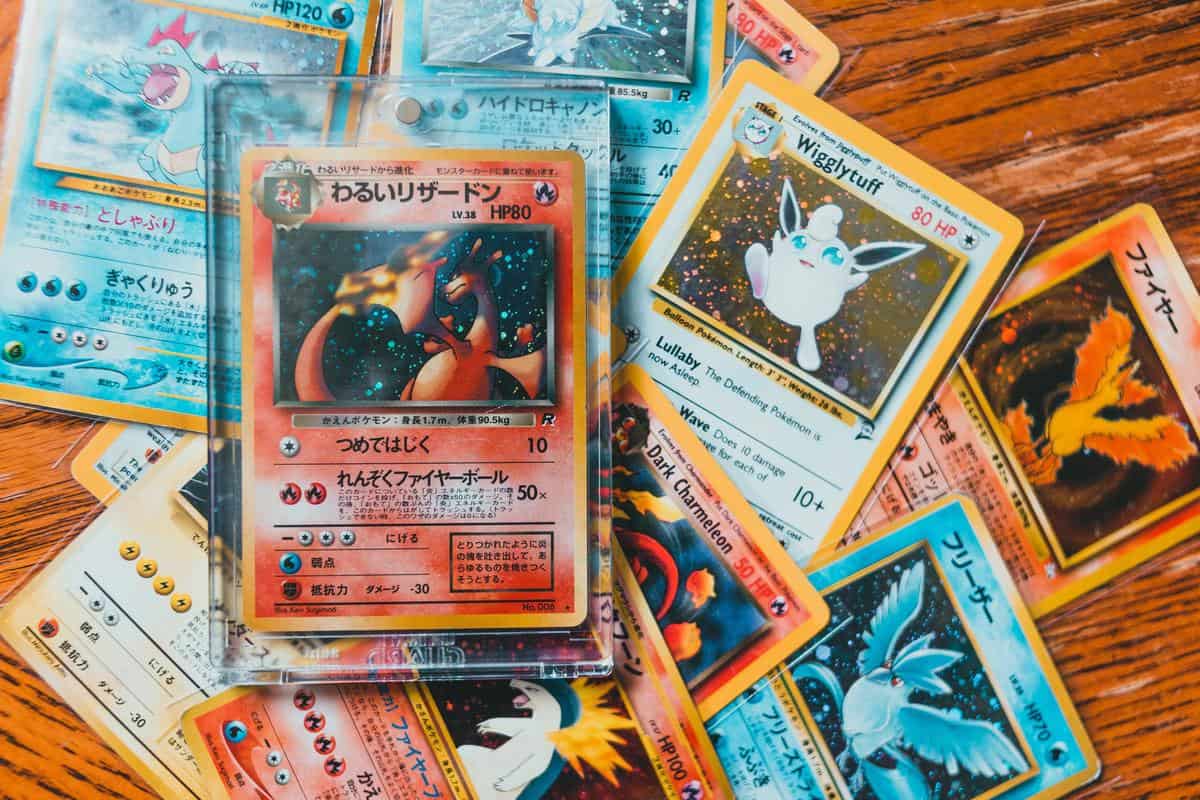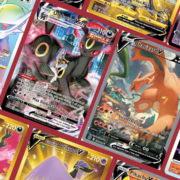Exploring The Value of Old Pokémon Cards
Exploring The Value of Old Pokémon Cards
Immersed in nostalgia and conjuring vivid memories of an iconic era, Pokemon cards, with their rich history and ever-increasing value, have left an indelible mark in the world of collectibles. These small, meticulously illustrated pieces of cardboard, first unveiled to the public in the late 90s, have since evolved into a cultural phenomenon, captivating the hearts of millions around the globe. With each passing year, old Pokemon cards have garnered immense popularity and recognition, not just for their critical role in the spectacular Pokemon franchise, but also for their rarity, value, and collectability. This deep dive into the intriguing world of Pokemon cards traces their journey from inception to the present day, highlights their value in the current market, and provides essential tips on identifying genuine cards and their maintenance.
The History of Pokémon Cards
Origins of Pokémon Cards
In the late 1990s, a new phenomenon featuring collectible characters hit the shelves in Japan – Pokémon cards. These colorful, intricately illustrated cards were the brainchild of Satoshi Tajiri and artist Ken Sugimori, originally designed to be supplemental gameplay to their popular Pokémon video game series, launched by Nintendo. The design of the cards encouraged people to collect, trade, and battle game characters, in line with the “Gotta Catch ‘Em All!” catchphrase.
Initial Response and Success
The Pokémon cards were first commercialized in Japan in 1996 by a company known as Media Factory. The initial response was overwhelming, with the cards almost instantly becoming a sensation among children and gaming enthusiasts. The concept of trading and battling fantastical creatures resonated well with the target audience, adding a physical tangibility to the digital in-game universe. Furthermore, the game’s strategy-based play offered a competitive edge, making it intriguing for players. The first international release happened in 1998, distributed by a subsidiary of Nintendo, Wizards of the Coast, who were known for creating the successful trading card game, Magic: The Gathering.
Growing Popularity and Global Expansion
The success of Pokémon cards expanded beyond Japan’s borders quickly, as localizations began to include multi-lingual instruction and card editions for worldwide players. By 2000, the cards had been introduced to almost every major world market, including the United States, Europe, and Australia. The game was not just a children’s pastime but a competitive phenomenon. National and international tournaments were held with participants competing for increasingly extravagant prizes. As the Pokémon franchise expanded to include video games, TV shows, movies, and merchandise, the global popularity of the cards grew.
Craze of the Late 90s and Early 2000s
In the late 90s and early 2000s, Pokémon card fever was at an all-time high. Collectors sought out rare, high-quality cards that often held significant value on the secondary market. Certain sought-after cards such as Charizard and Pikachu became popular collectibles, sometimes fetching thousands of dollars at auctions. The cards were and continue to be graded based on their condition, rarity, and demand, by companies like Professional Sports Authenticator (PSA). This card grading system further boosted the trading card market and heightened the excitement of pulling a high-grade, rare card from a pack.
Understanding the Popularity of Pokémon Cards
Pokémon cards, introduced over two decades ago, retain their iconic status even today. While the initial frenzy may have mellowed, these enchanting collectibles have witnessed a resurgence in popularity recently. This can be attributed to a wave of nostalgia sweeping over adults who collected these cards in their childhood and the surge in popularity of the Pokémon Go game in 2016. Certain coveted cards, such as the holographic Charizard and Pikachu Illustrator, can even command astronomical prices at auctions, often amounting to hundreds of thousands of dollars. This undying interest and increasing demand make it evident that Pokémon cards have passed the test of time and retain their special place in the hearts of enthusiasts globally.

The Rarity and Value of Old Pokémon Cards
Determining the Rarity of Vintage Pokémon Cards
The rarity of vintage Pokémon cards is determined by various factors. The edition of the card, for instance, plays a key role. First Edition cards, identifiable by their unique emblem found on the left side of the card, were the inaugural prints of a particular set, making them more elusive and consequently, more precious. Another defining characteristic is the card’s holographic or ‘holo’ feature—these reflective designs on the Pokémon images significantly increase their scarcity. Misprints, a category of unique cards with unintended features or printing errors, are rare due to their limited numbers, thus enhancing their value. Promo Pokémon cards, not available in standard retail packs but distributed as special editions at events or with movie tickets, are another category of uncommon cards due to their restricted availability.
The Value of Old Pokémon Cards
The value of old Pokémon cards is heavily contingent on a few primary factors: rarity, condition and demand. As covered, a card’s rarity impacts price due to supply and demand principles. The condition of the card noticeably affects its value too. Cards rated in mint or near-mint conditions fetch higher prices than those with visible blemishes or damages. Ideally, collectors value mint condition cards that are free from any signs of wear, tear, or damage.
Another key determinant is the card’s grading. Grading is done by professional grading companies that assess and certify cards based on their physical condition. The card’s grade can significantly influence its price, with higher-rated (Near Mint-Mint 8, Mint 9, Gem Mint 10) cards demanding top dollar.
Most Coveted Old Pokémon Cards
Some of the elusive and highly prized old Pokémon cards include rarities like the Pikachu Illustrator card, Charizard First Edition card, and Pre-release Raichu cards. Of these, the Pikachu Illustrator card, released only for a competition in Japan, is considered the holy grail of Pokémon cards due to its limited availability. On the other hand, Charizard First Edition card’s popularity stems from Charizard’s significance in the franchise and the fact that it was part of the original set of cards, making it a nostalgic pick for many collectors. Pre-release Raichu card, a supposed misprint that allegedly leaked into the market, is one of the rarest, bringing a mystique and high value with it.
Current Value of Old Pokémon Cards
The marketplace for old Pokémon cards has gone through a surge recently, seeing unprecedented prices. The Pikachu Illustrator card has fetched upwards of $200,000 at auctions, while a Gem Mint 10 graded First Edition Charizard card sold for over $350,000 in early 2021. Auction houses and online markets frequently see other old Pokémon cards being sold for thousands of dollars, attesting to their durability as collectibles and their increasing monetary value. The exact price can greatly fluctuate depending on the condition, the grade, and the current market demand.
Understanding the Value of Old Pokémon Cards
Vintage Pokémon cards hold a certain nostalgia and value that directly correlates with their unique rarity and condition. These coveted pieces of Pokémon history are now high in demand due to a resurgence in the franchise’s popularity, pushing their prices upwards due to the limited quantity. Pokémon, as a cultural phenomenon, has added to the collectible nature of these vintage cards. The ongoing popularity of the franchise, coupled with a passionate and vibrant fanbase, ensures that the Pokémon card trading market stays buoyant and lucrative.

How to Identify and Care for Old Pokémon Cards
Detecting Authentic Vintage Pokémon Cards
One of the key aspects to appreciate and value vintage Pokémon cards is understanding how to identify authentic ones. Pokémon cards, since their initial release in the late ’90s, have always sparked interest among fans and collectors alike. Identifying genuine cards involves examining specific characteristics that separate them from counterfeit ones. For example, the flip side of an authentic card displays a classic blue design featuring a Pokéball and a gold border. If the colors seem inconsistent or off, it could indicate the card is not genuine. The typography on official cards also has a specific look and feel. Any variation in font could suggest a fake.
When held, an authentic card has a definite weight, dimension, and texture. Any discrepancy can point towards a counterfeit. Another way to verify authenticity can be checking for a black layer along the card’s edges, visible under proper light. If this is missing, the card is likely counterfeit.
Set and Rarity Symbols
Genuine old Pokémon cards are identified by set symbols and rarity symbols. The set symbols are small icons printed at the right of the card number and represent the expansion set to which a card belongs. Original base set cards from the late ’90s, for example, do not have a set symbol, which helps identify them as some of the earliest cards.
Rarity Symbols can also be found on the right-hand side, at the bottom of the card, indicating whether the card is common, uncommon, rare, or holo rare.
Card Condition and Value
The condition of your old Pokémon cards greatly affects their value. They are graded on a scale, from poor to mint condition. Factors considered are the card’s centering, corners, edges, scratches, and curvatures. It’s important to periodically check your cards for wear and tear.
Caring for Old Pokémon Cards
Caring for these cards is essential. You have to protect them from sunlight, intense heat, and humidity as these conditions can cause them to curl or fade. It’s advisable to store them in soft penny sleeves or hard top loaders for everyday storage, and card binders for display purposes. Avoid touching the face of the cards as oils from hands can potentially damage them.
For cards of high value or sentimental worth, consider professional grading. This includes sealing the card in a protective, tamper-proof case, ensuring its preservation. It also provides an official condition grade that can increase a card’s potential value.
Storing and Displaying Pokémon Cards
Long-term storage should involve keeping Pokémon cards in a cool, dry, dark location to prevent damaging UV rays and moisture from degrading the cards. For showing off your collection, specially designed cardholder sheets and albums can offer both visibility and protection.
Keep in mind that Pokémon cards, particularly old and rare ones, can become valuable assets. Treat each card with the utmost care and consideration to keep them in top shape. Extreme care should be taken when dealing with these cards, especially when removing them from their protective sleeves.

Photo by introspectivedsgn on Unsplash
Undoubtedly, the universe of Pokemon cards is a captivating realm, teeming with colorful characters, compelling narratives, and valuable specimens that are coveted by collectors worldwide. The allure of these cards lies not just in their vibrant illustrations or roles in gameplay, but also in their intrinsic value shaped by factors such as rarity, condition, and age. Understanding the ins and outs of Pokemon card collection – from identifying genuine ones to preserving their condition – is a fascinating and rewarding endeavor. As this journey through the history and value of Pokemon cards has shown, it’s a realm where enchanting childhood memories blend seamlessly with the thrilling pursuit of rare collectibles, providing a rich and ever-evolving experience for fans and collectors alike.
Writio: Your AI writing partner – Crafted by Writio, this article embraces the art of AI-generated content creation, revolutionizing the way publishers and bloggers communicate.









